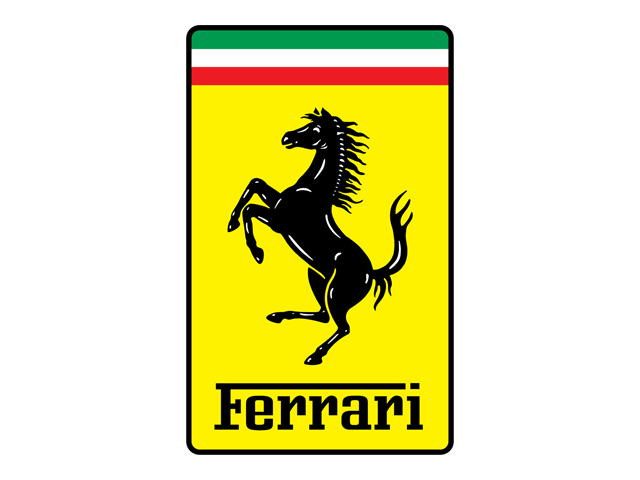1959 Ferrari 250 Testa Rossa Fantuzzi Spyder

The descriptions of the Classic Cars in the Directory were partly generated or supplemented with the help of artificial intelligence (AI). The content may occasionally not always be entirely accurate or factually correct despite careful checking.
The Ferrari 250 Testa Rossa Fantuzzi Spyder 1959 is a perfect embodiment of the iconic 1950s racing car, which boasted a blend of high technology and timeless style. The vehicle is bedecked with a stunning red exterior color that is matched with a design profile that captures the essence of Ferrari's heritage. With its aggressive aerodynamic layout, the 250 Testa Rossa Fantuzzi Spyder 1959 was among the most advanced sports cars of its time.
The vehicle features a streamlined body that was designed to reduce air resistance, optimize downforce, and enhance handling. It is powered by a Ferrari V12 engine that delivers up to 300 horsepower at 7,200 RPM. This engine is mated to a four-speed manual gearbox that provides smooth and precise gear changes. The vehicle has a top speed of nearly 160 mph, making it one of the fastest sports cars of the 1950s.
The Ferrari 250 Testa Rossa Fantuzzi Spyder 1959 comes equipped with a range of advanced suspension and braking systems that contribute to its exceptional performance. The car has an independent suspension system at the front and rear, with telescopic shock absorbers and double wishbones. The vehicle's brakes are hydraulic and feature vented discs.
Inside the cabin, the Ferrari 250 Testa Rossa Fantuzzi Spyder 1959 is crafted with the utmost attention to detail. The interior is a mix of leather and Alcantara, with racing bucket seats and a three-spoke steering wheel. The driver's cockpit is designed with a minimalist approach, providing the driver with vital information at a glance. The vehicle's instrument cluster is centered around a large tachometer, with a speedometer and gauges monitoring oil pressure, fuel level, and water temperature.
In terms of safety, the Ferrari 250 Testa Rossa Fantuzzi Spyder 1959 is designed with a range of features that ensure the driver's total control of the vehicle. The car features a well-structured roll cage and is equipped with a firewall that separates the cabin from the engine bay. The car also comes with a fire extinguisher and a set of racing harnesses that maintain the driver and passengers firmly in place while racing.
In summary, the Ferrari 250 Testa Rossa Fantuzzi Spyder 1959 is the perfect example of what a 1950s sports car should be. The vehicle features a blend of iconic design, advanced technology, and outstanding performance that makes it one of the most sought-after cars in the world. With its sleek and streamlined body, powerful V12 engine, exceptional suspension, and advanced braking systems, the Ferrari 250 Testa Rossa Fantuzzi Spyder 1959 is a testament to Ferrari's unwavering commitment to excellence.
Milestones
- The Ferrari 250 Testa Rossa Fantuzzi Spyder was introduced in 1957 as a sports car for racing. - In 1958, ten new 250 TRs were built, making a total of 19 cars produced in two years. - At the 24 Hours of Le Mans in 1958, the Testa Rossa dominated the race with a first and a second place finish. - The 1959 model year saw significant improvements to the Testa Rossa, including a new front-end design and a longer wheelbase. - In 1959, the Ferrari 250 Testa Rossa won the 12 Hours of Sebring and the Targa Florio, two of the most prestigious endurance races in the world. - The 1959 model of the Testa Rossa is considered to be one of the most beautiful Ferraris ever built, and is highly sought after by collectors and enthusiasts. - The Testa Rossa continued to be successful in racing throughout the 1960s, winning several championships and races. - As of 2021, the Ferrari 250 Testa Rossa Fantuzzi Spyder is one of the most valuable and iconic classic cars in the world, with some examples selling for tens of millions of dollars at auction.Technical
- Engine: 3.0-liter Tipo 128 V12 - Horsepower: approximately 300 hp - Transmission: 4-speed manual - Suspension: Independent double wishbone - Brakes: Drums with hydraulic assisted discs - Top speed: over 160 mph - Weight: 840 kg - Body style: Open two-seater - Chassis: Tubular steel frame - Steering: Worm and sector - Fuel system: Three Weber carburetors - Tires: Pirelli Cinturato - Production years: 1957-1961 - Number produced: 34 - Notable wins: 1958 24 Hours of Le Mans, 1959 12 Hours of Sebring



